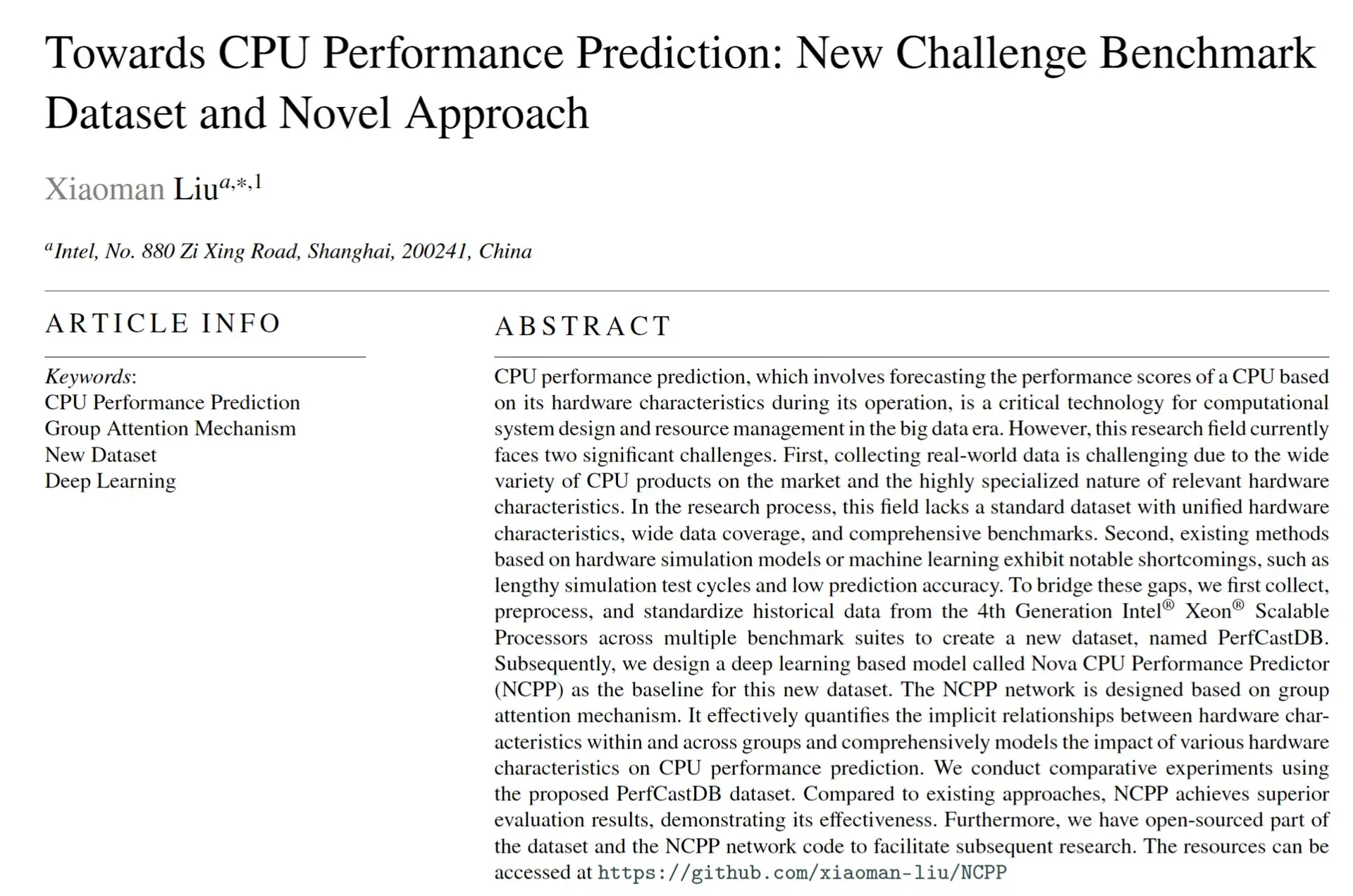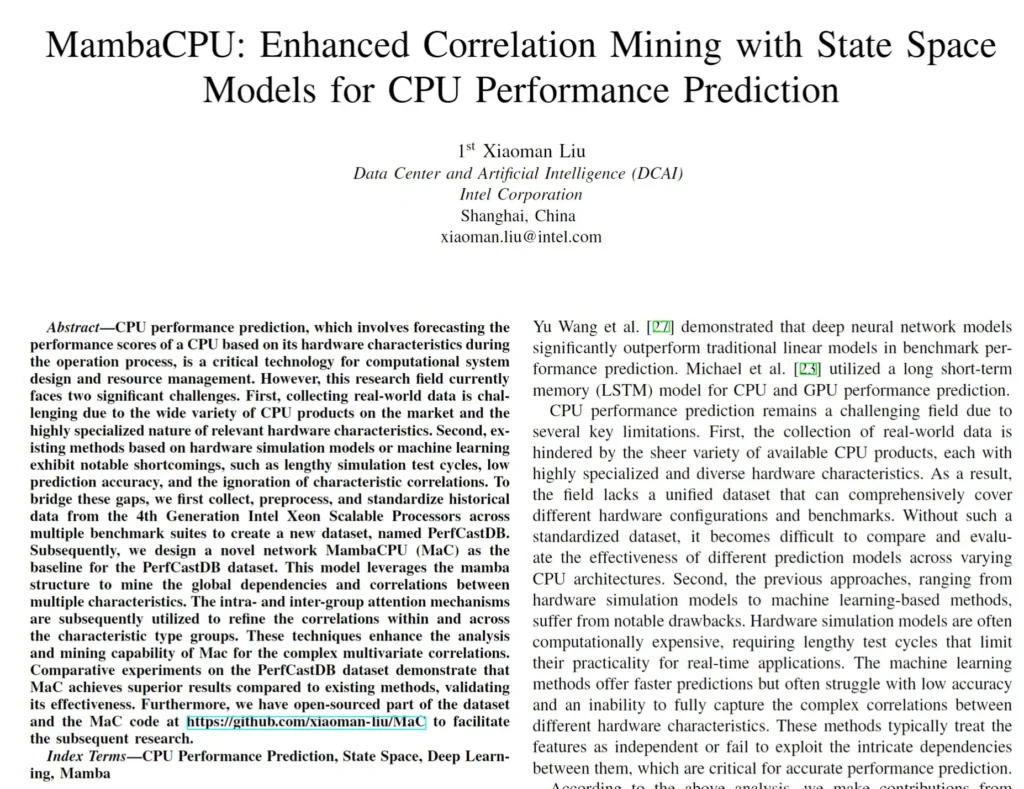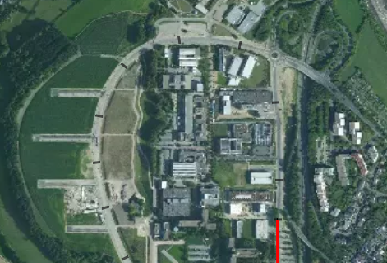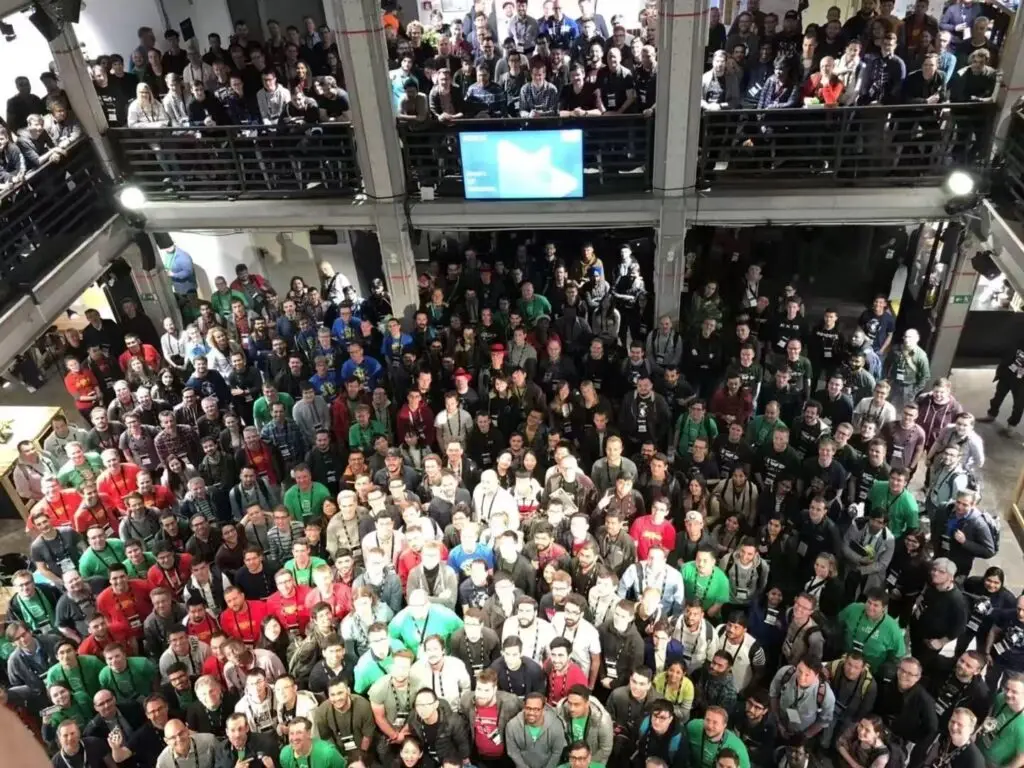Maneuver identification in urban scene using machine learning
Abstract
The rapid increase in urban car ownership has intensified traffic congestion, inefficiencies, and accidents. Autonomous vehicle development addresses these challenges by enhancing automation in driving systems. This paper tackles data processing issues in driver behavior datasets using weighted loss functions to manage class imbalance and recoding techniques to address high-dimensional feature problems. These methods enable efficient training of variable-length samples, improving model training efficiency.
We applied and optimized deep learning models, including CNNs (FCN, ResNet) and RNNs (LSTM, Bi-LSTM), for driver behavior classification, achieving significant improvements in precision, recall, and F1 scores. By fusing ResNet and Bi-LSTM, we developed a robust model with superior performance, verified under data perturbations to maintain high accuracy.
The study highlights the importance of perception, decision-making, and execution in autonomous systems. Our methods in data preprocessing and model design provide valuable insights for advancing autonomous driving algorithms.
Keywords: Driver Behavior Recognition, Deep Learning, Time-Series Classification, Convolutional Neural Networks, Recurrent Neural Networks
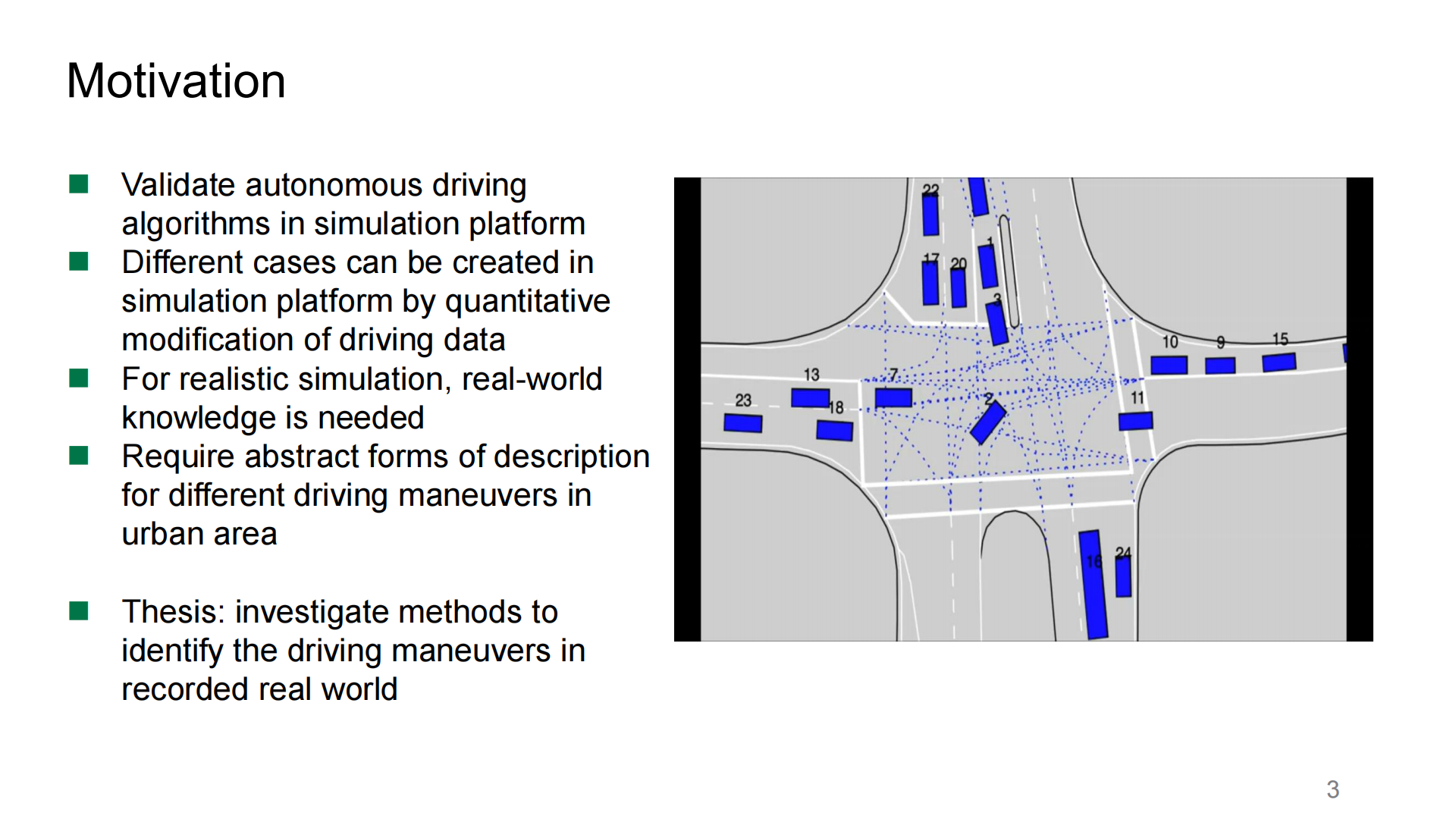
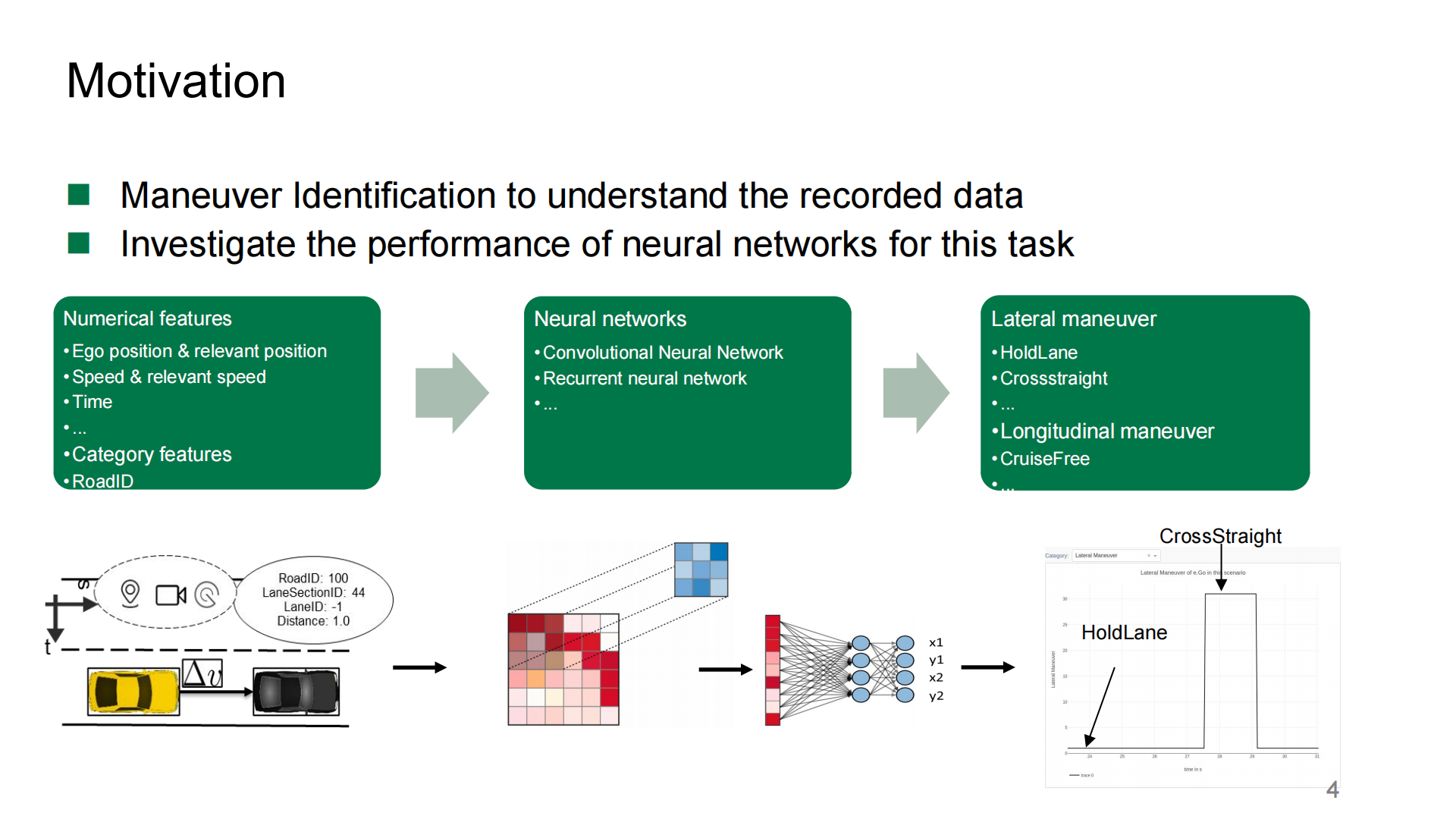
Data Format
Utilized real-world time-series data of vehicle driving behavior (e.g., speed, position) collected via GPS and radar
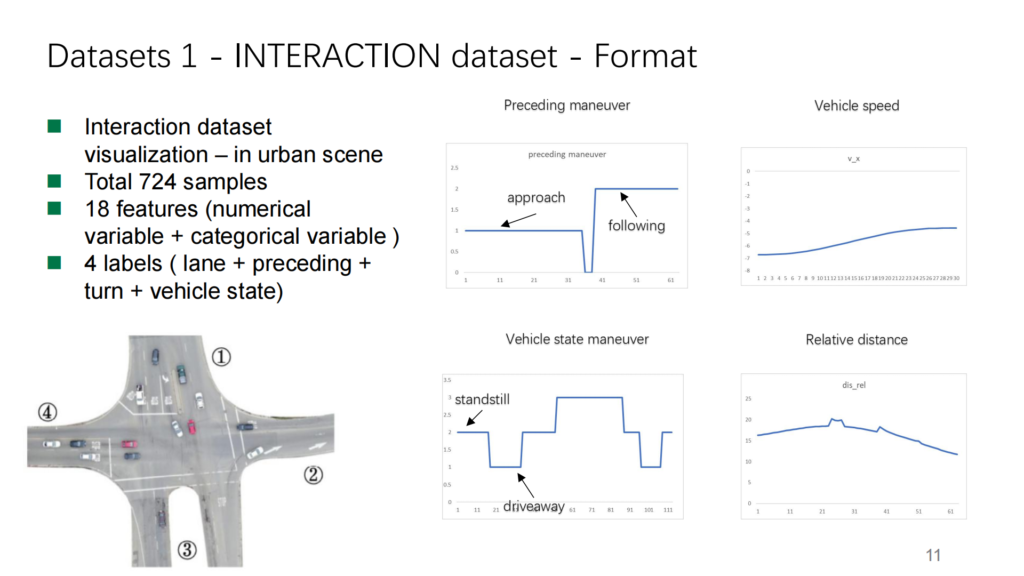
Challenges
Addressed key challenges, including class imbalance in driving behavior datasets, high-dimensional features, and capturing temporal dependencies
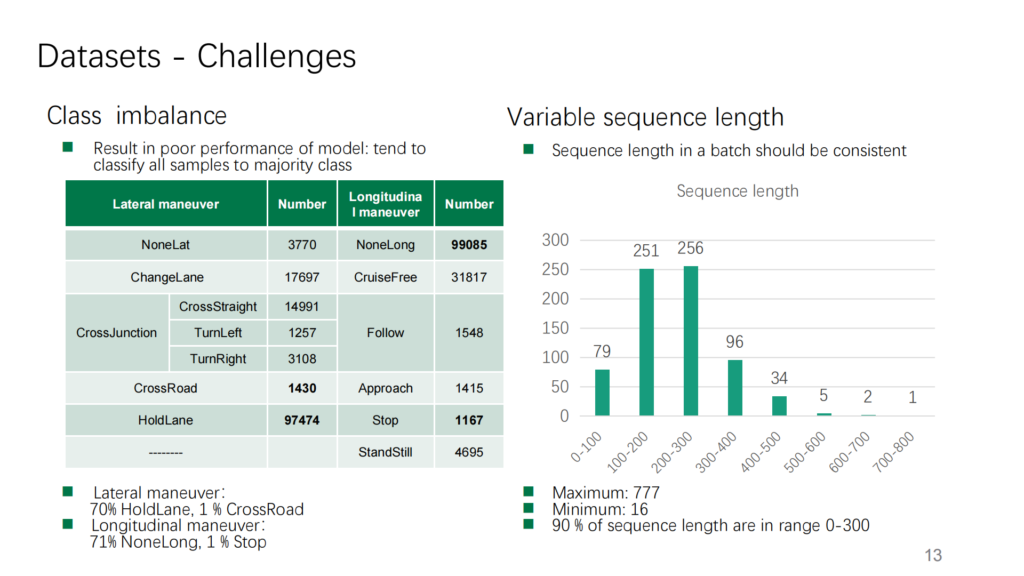
Results
Achieved a final accuracy of 93%, improving by 13% compared to traditional methods. The model was simpler, lighter, and more efficient
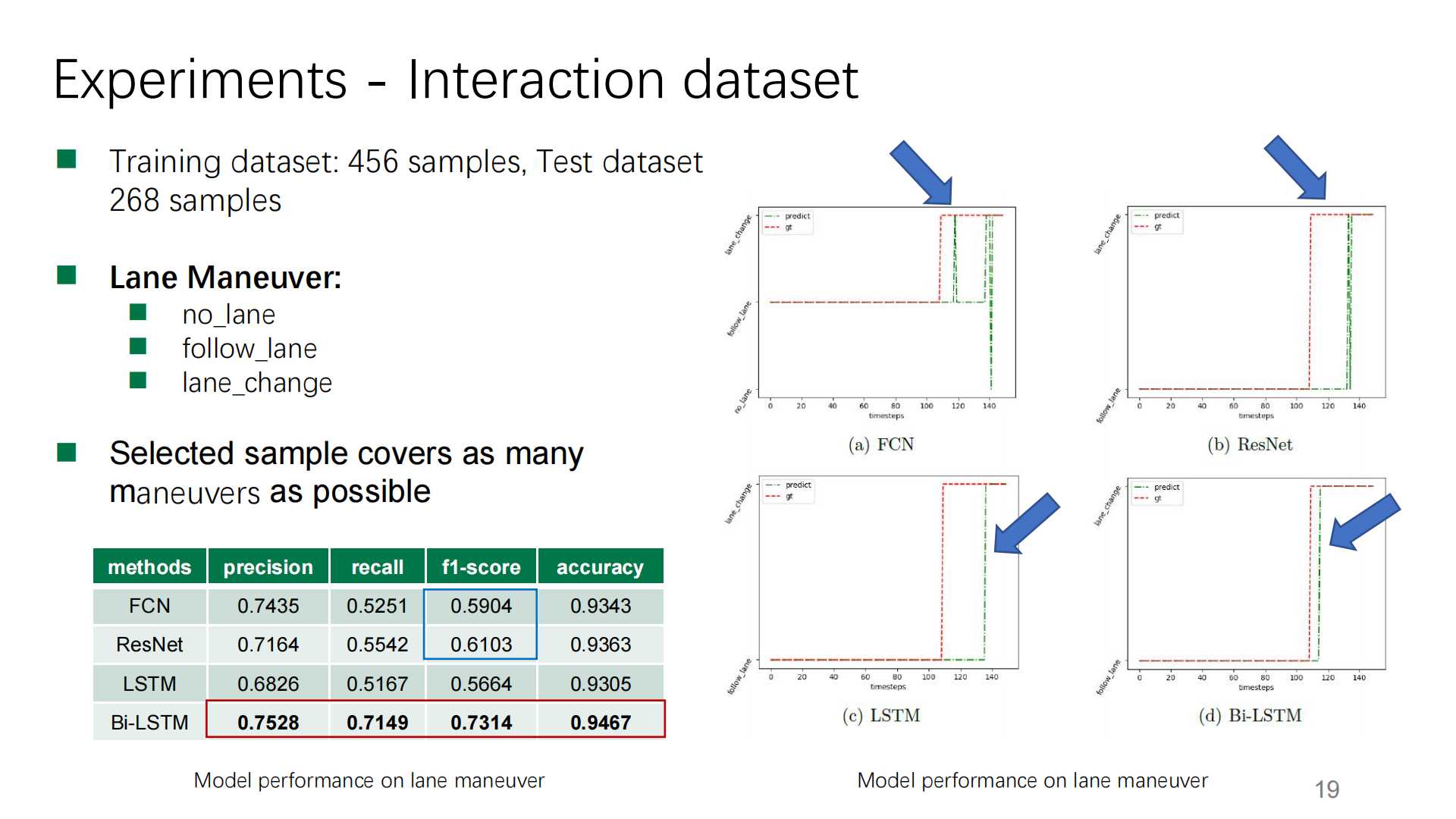
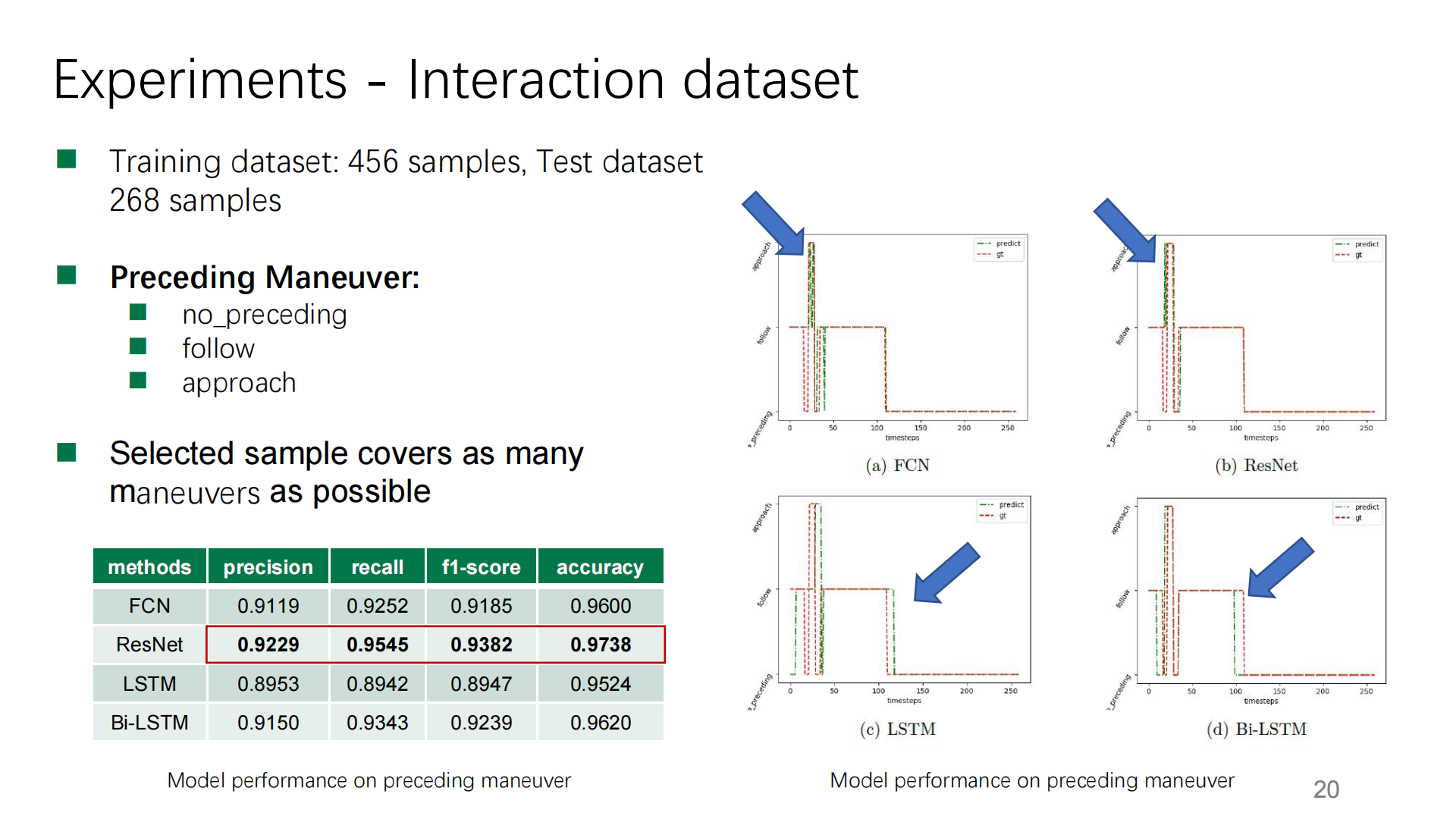
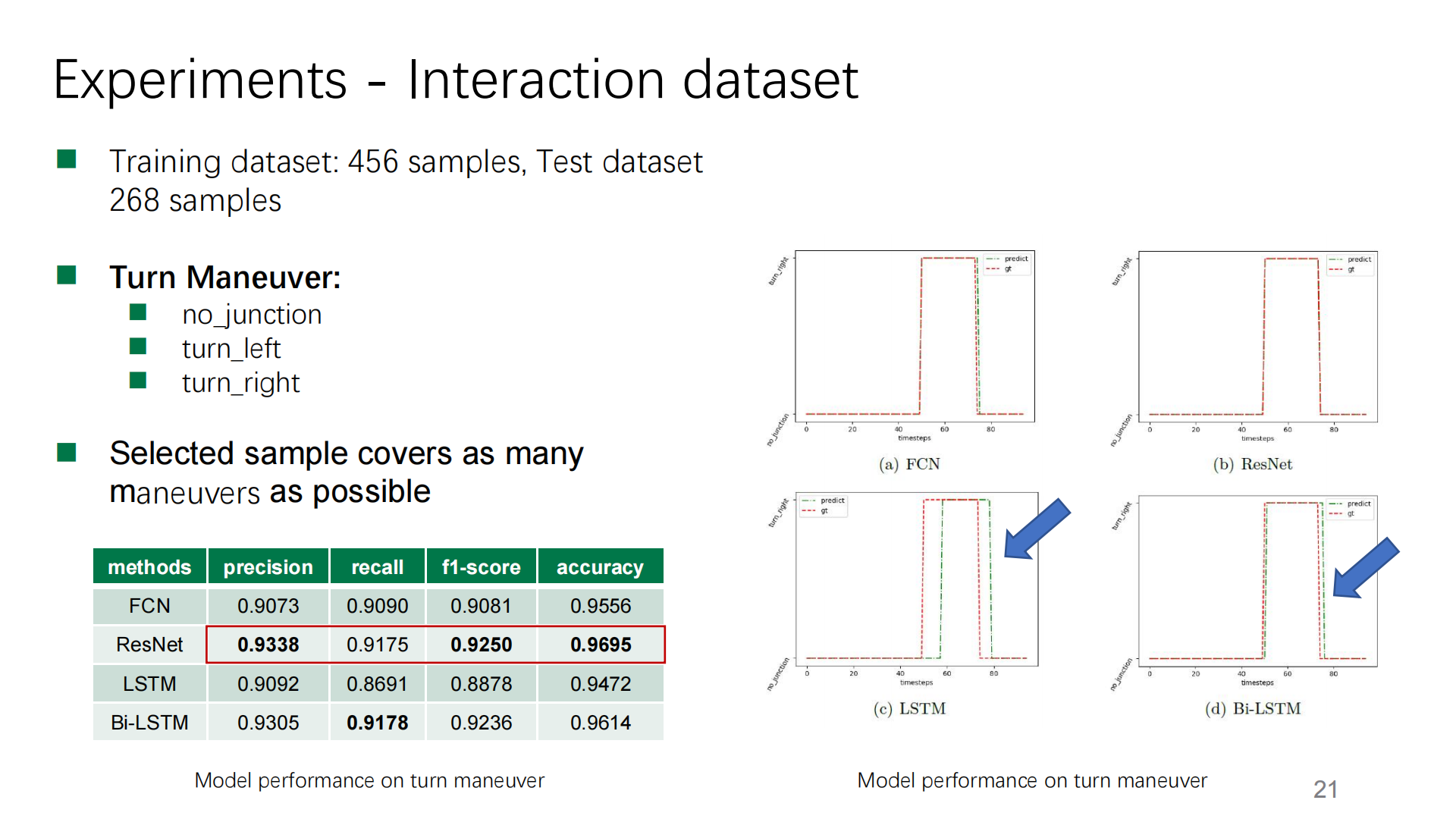
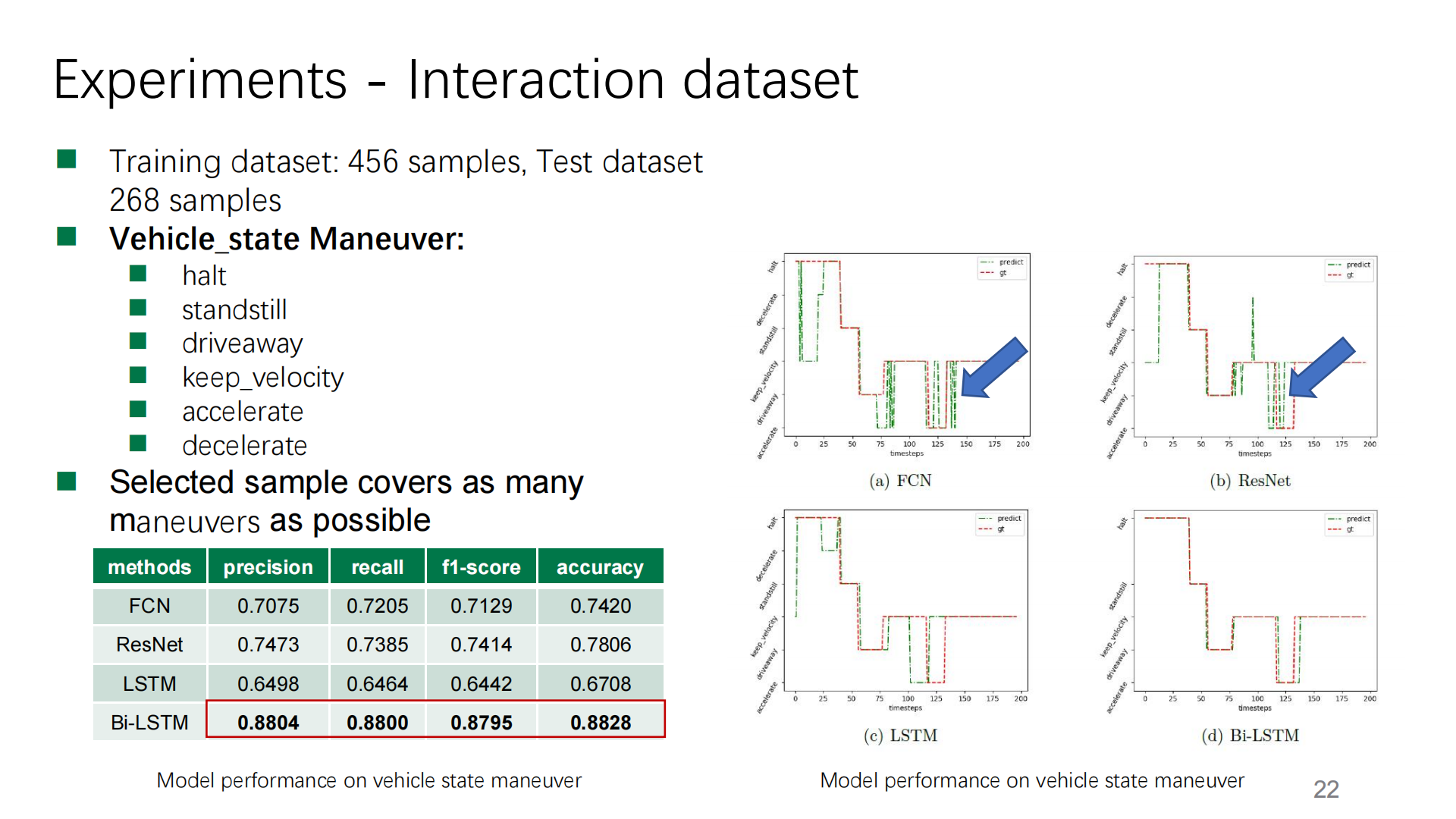
Reference
This project utilizes the INTERACTION Dataset for its development and analysis.
Share via:

